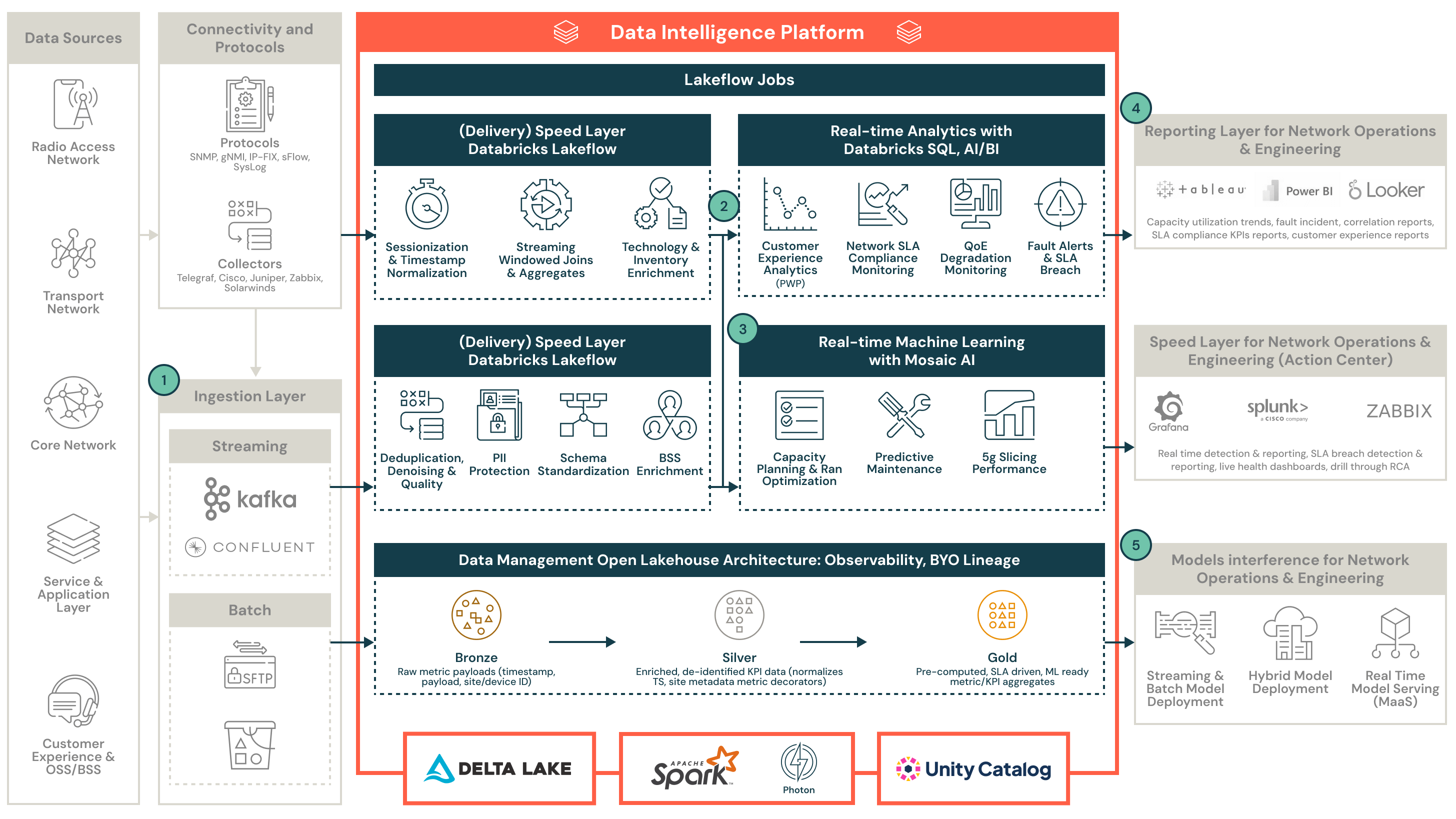Telecom Network Performance Monitoring Reference Architecture
This architecture helps you understand integrations with common industry sources and sinks for common network performance monitoring use cases in Telecommunications. It outlines the best practice design patterns across the lakehouse architecture.

Become a telco of the future
Establish a telecom architecture that enables network performance and customer experience analytics at scale.
- Data Ingestion
Key network KPIs from RAN, Transport, Core, Application Probes and BSS/OSS interfaces are ingested via scalable streaming and batch pipelines. Protocols are normalized and lightweight PII filtering is applied at the edge. - Lakehouse Storage and Speed Layer
A unified lakehouse architecture supports both real-time and historical analytics. A speed layer enables real-time KPI analysis, fault detection and alerting, while raw data is persisted to Bronze tables, enriched in Silver tables and prepared for deep analytics in Gold layers. - Feature Engineering and Model Training
Real-time Feature Serving powers low-latency analytics, while historical data feeds continuous model training and hyperparameter tuning. ML pipelines are optimized for use cases like anomaly detection, congestion prediction and network optimization. - BI and Network Operations Reporting
Network performance and quality of experience metrics are surfaced via traditional BI tools and AI-enhanced dashboards. Real-time analytics are integrated with Databricks for closed-loop operations and decision automation. - Model Serving and MLOps
Models are deployed across batch, stream, real-time, edge and on-premises environments — aligned to network latency and performance needs. MLOps practices ensure robust monitoring, explainability and governance.
Benefits
This architecture offers a scalable, modular and future-proof foundation for telco analytics and AI. By unifying streaming and batch data, integrating real-time analytics with model deployment and enabling both business intelligence and AI-driven automation, it bridges the gap between operational monitoring and strategic insight.
With native support for multicloud, on-premises and edge deployments, and built-in governance, observability and lineage, it empowers telecom operators to:
- Detect and resolve issues proactively
- Optimize network performance continuously
- Enhance customer experience intelligently
- Accelerate time to insight and decision-making
In a world where telco networks are both infrastructure and experience platforms, this Databricks-powered architecture ensures you’re not just keeping up — but leading the way.


